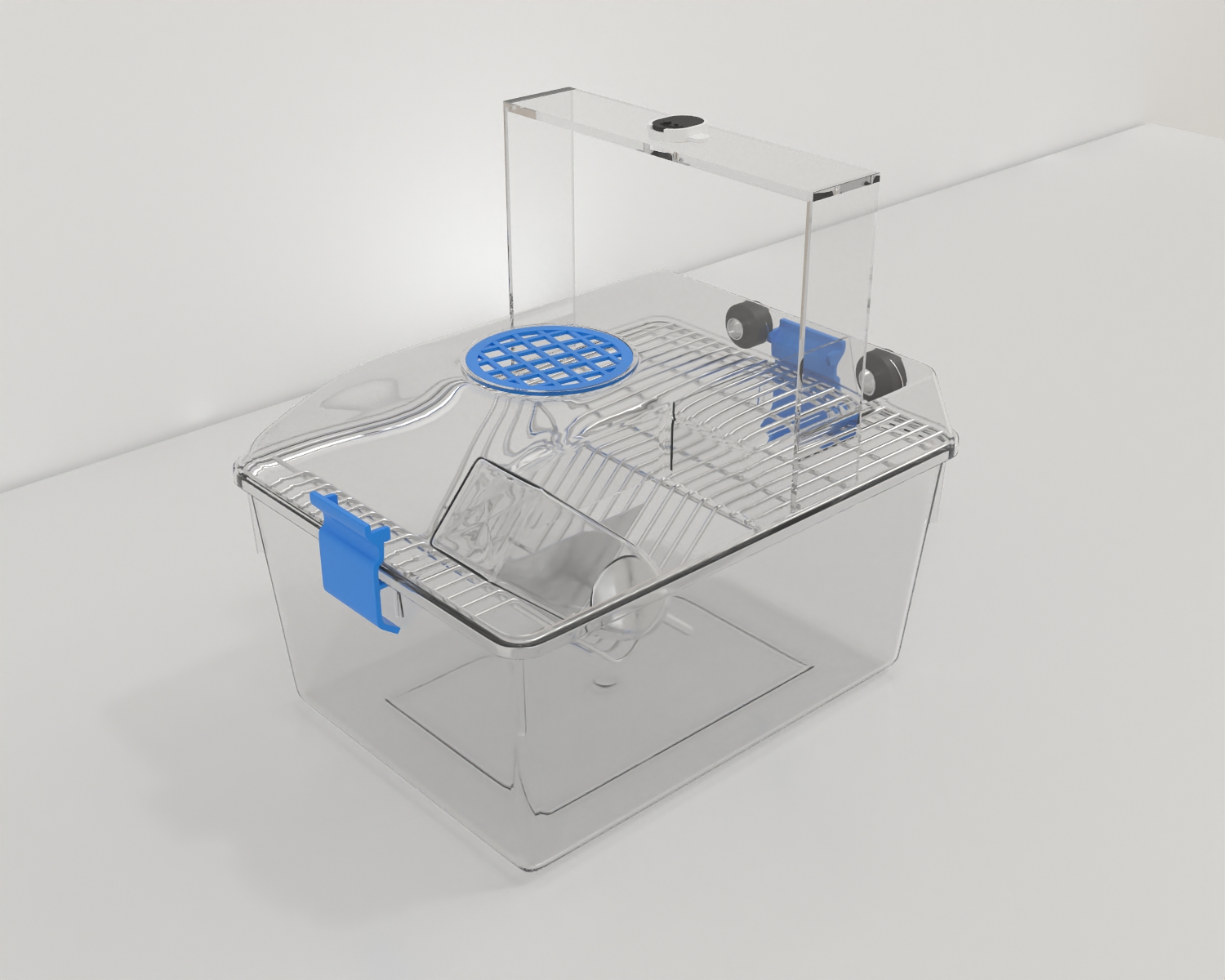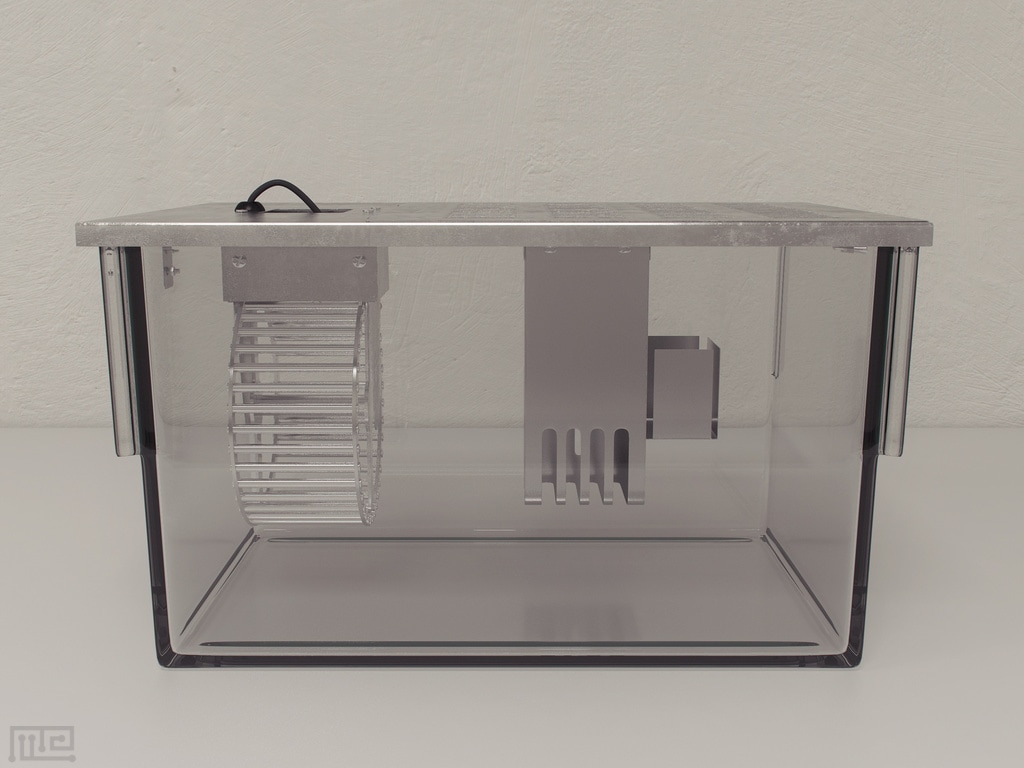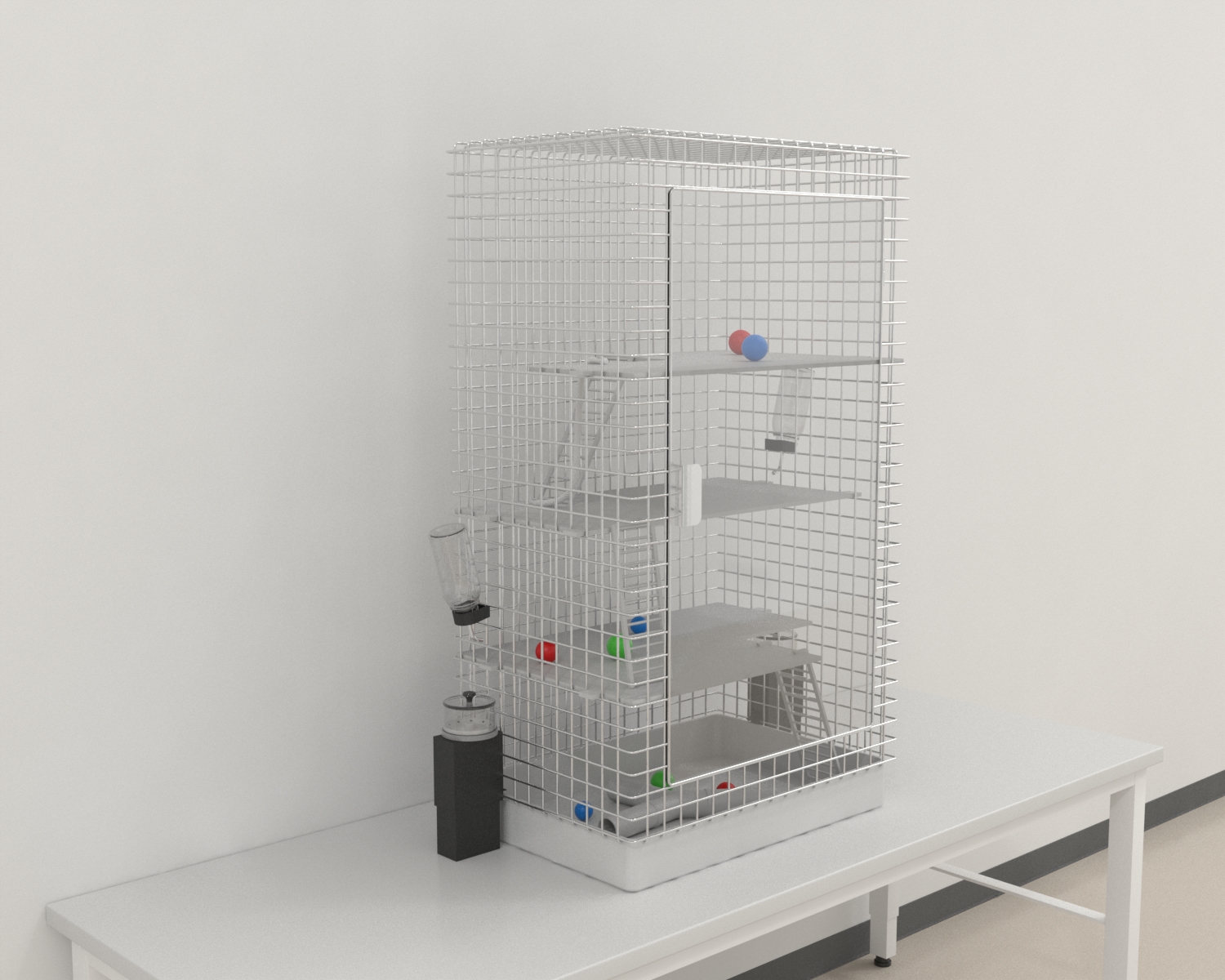To cite this article
Guidelines for Rodent Cages and Enclosures, Maze Engineers (2023).
The guidelines for biomedical research involving rodents in the USA are set by the National Institutes of Health (NIH) and the Office of Laboratory Animal Welfare (OLAW)1. The NIH provides the “Guide for the Care and Use of Laboratory Animals” which outlines the minimum requirements for the care and use of animals in research. In addition, OLAW provides oversight and assurance that institutions receiving federal funding are in compliance with the Public Health Service Policy on Humane Care and Use of Laboratory Animals 1, 2.
Here are some of the key principles and guidelines for the use of rodents in biomedical research:
- Justification: The use of rodents in research must be justified based on scientific necessity and the potential benefits of the research.
- Animal Welfare: The welfare of the animals must be a top priority. This includes providing appropriate housing, nutrition, and veterinary care.
- Minimization of Pain and Distress: All procedures involving rodents must be designed to minimize pain and distress. Pain relief must be provided when necessary.
- Training: Researchers, technicians, and other personnel involved in the care and use of rodents must be appropriately trained.
- Record Keeping: Detailed records must be kept for all animals used in research, including their source, breeding history, health status, and any procedures performed on them.
Oversight: Institutional Animal Care and Use Committees (IACUCs) must review and approve all research involving animals, and oversee the care and use of animals at the institution1.
Replacement, Reduction, and Refinement: The principles of replacement, reduction, and refinement (the “3Rs”) must be applied to all research involving animals. This means using alternative methods when possible, minimizing the number of animals used, and refining procedures to minimize pain and distress.
It is important to note that these guidelines are constantly evolving, and researchers should stay up-to-date with the latest developments and best practices in the field.
Enclosure Dimensions for Rodents
Enclosures should protect rodent subjects from the elements and be composed of sturdily constructed materials which are can be kept dry and easily cleaned with removable components which can be replaced if soiled or damaged. Ideal flooring/bedding material includes sand, grass, and absorbent bedding materials. Enclosures should be secure to prevent animal escape and safe for use (such as not having any sharp edges etc to reduce injury) with convenient access to food and water at all times.
Each enclosure must have minimum dimensions depending on the number of animals and their weight to ensure all subjects can normal postural adjustments and movements. These minimum dimensions also apply with the addition of suspended fixtures and additional accessories. Additional care should be taken to not house multiple animals together which show aggression or other physical or mental debilitations, these animals should be housed separately2.
| Animal | Weight (g) | Floor Area/Animal (in2) | Height (in) |
| Mouse | <10
10-15 15-25 >25 Female + Litter |
6
8 12 ≥15 51 |
5 |
| Rat |
<100 100-200 200-300 300-400 400-500 >500 Female + litter |
17 23 29 40 60 ≥70 124 |
7 |
|
Animal/Cage Type |
Cage Size (in2) |
Maximum Number of Animals |
|
Mouse ventilated Cage |
77.5 |
5 mice >25g Mouse breeding pair (2 adults) + one unweaned litter |
| Rat ventilated Cage | 140 |
2 rats > 500g Female+ one unweaned litter (rat) |
| High Containment ventilated cages | 142 |
9 mice >25g |
Temperature
Temperatures of animal enclosures should not drop below 44.96°F/ 7.2°C for more than 4 consecutive hours or rise above 85.1°F / 29.5°C2. The recommended dry bulb temperature for enclosures should be 68-78°F/ 20-26°C3.
Ventilation
Sufficient ventilation is required at all times when animals are in their enclosures to minimize moisture condensation, minimize odors, drafts, and ammonia levels. Methods of ventilation include HVAC systems, windows, air conditioning, fans, vents, and doors2, 3. While there are no strict guidelines for ventilation when using a ventilation system per enclosure, a minimum of 10-15 air changes per hour is recommended2, 3. Caution should be taken to ensure ventilation methods do not cool the enclosure, particularly with neonates3.
Lighting
Animal enclosures should be provided with a dinural lighting cycle provided by artificial or natural light. Lighting should be diffused throughout the enclosure areas uniformly2. Rodents in generally prefer lower light intensity3. A lux value of 325 lux (30-ft candles) approximately 1 m (3.3 ft) above the floor is recommended to not cause phototoxic retinopathy in light-sensitive animals3.
Enrichment
Enrichment apparatus allows animal subjects to express themselves physically and mentally to reduce destructive behaviors. Enrichment items include exercise wheels, mirrors, food items and treats, tunnels, burrowing areas, reward tasks and activities2.
Noise and Vibration
Environmental noise should be taken into consideration when housing animals. Factors include noise intensity, frequency, rapidity of onset, duration, and vibration potential of the sound and the hearing range, noise exposure history, and susceptibility of the species, stock, or strain of the rodent model being housed3. Environmental noise should be kept below 85 dB to prevent stress and anxiety-related behaviors as well as physical or mental effects. Methods of reducing noise include having separate rooms for noisy equipment or apparatus, keeping equipment in good repair, and using sound-attenuating materials3.
Excessive vibration should be avoided in and around animal enclosures. Vibration, like noise, varies in intensity, frequency, and duration. Sources include apparatus and machinery which can be reduced by separating apparatus away from enclosure or external sources3.
See our enclosure products
References
- The Institutional Animal Care and Use Committee, National Institute of Health
- Animal Welfare Act and Animal Welfare Regulations, United States Department of Agriculture, 2017
- Guide for the Care and Use of Laboratory Animals, National Research Council, 2011.




